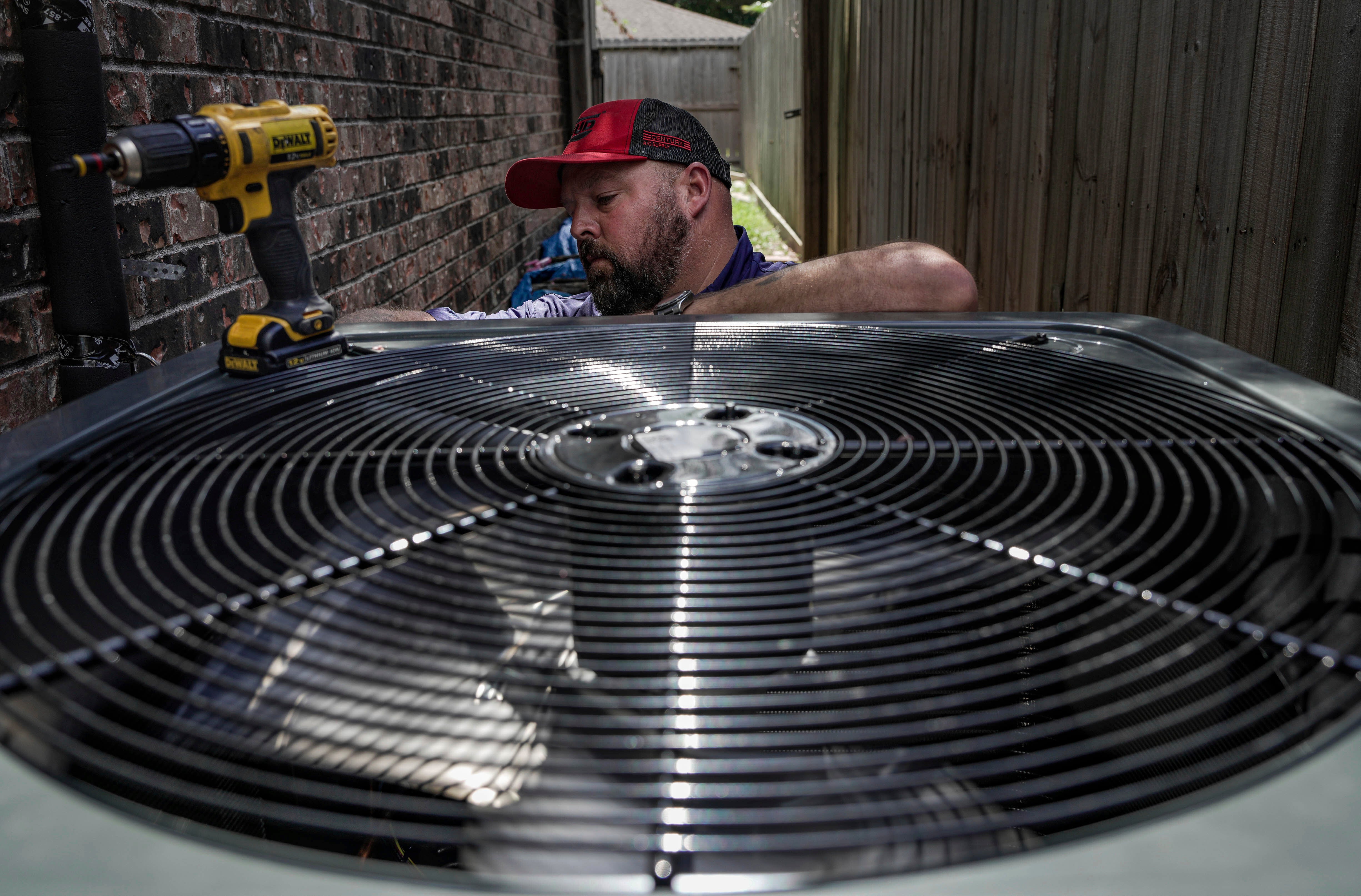EPA sets stricter limits on hydrofluorocarbons used in refrigerators, air conditioners
The Environmental Protection Agency is enforcing stricter limits on hydrofluorocarbons, highly potent greenhouse gases used in refrigerators and air conditioners that contribute to global warming

The Environmental Protection Agency is enforcing stricter limits on hydrofluorocarbons, highly potent greenhouse gases used in refrigerators and air conditioners that contribute to global warming.
A rule announced Tuesday will impose a 40% overall reduction in HFCs starting next year, part of a global phaseout designed to slow climate change. The rule aligns with a 2020 law that calls for an 85% reduction in production and use of the climate-damaging chemicals by 2036.
Officials said refrigeration and air conditioning systems sold in the United States will emit far fewer HFCs as a result of the rule, the second step in a 15-year phasedown of the chemicals that once dominated refrigeration and cooing equipment.
Here’s a look at HFCs and what the United States and other countries are doing to limit their use.
WHAT ARE HFCs?
Hydrofluorocarbons are highly potent greenhouse gases commonly used in refrigerators and air conditioners. HFCs produce greenhouse gases that are thousands of times more powerful than carbon dioxide. They often leak through pipes or appliances that use compressed refrigerants and are considered a major driver of global warming.
WHAT IS BEING DONE TO LIMIT HFCs?
More than 130 countries, including the United States, have signed a 2016 global agreement to greatly reduce use and production of HFCs by 2036.
The Senate ratified the so-called Kigali Amendment to the 1987 Montreal Protocol on ozone pollution last year in a rare bipartisan vote. The measure requires participating nations to phase down production and use of HFCs by 85% over the next 13 years, as part of a global phaseout intended to slow climate change.
Scientists said the agreement, reached in Kigali, Rwanda, could help the world avoid a half-degree Celsius of global warming.
Ratification of the amendment, signed last year by President Joe Biden, follows bipartisan action Congress took in 2020 to approve the American Innovation and Manufacturing Act, which phased out domestic HFC manufacturing. The AIM Act has accelerated an industry shift from HFCs to alternative refrigerants that use less harmful chemicals and are widely available throughout the country. The law also averts a previous patchwork of state laws and regulations that govern HFCs.
WHAT DOES THE LATEST RULE DO?
The new rule announced Tuesday builds on a 10% reduction required by the end of this year. It requires a 40% overall reduction from 2024 through 2028.
Companies that produce, import, export, destroy, use, process or recycle HFCs are subject to the rule.
EPA officials said the rule would help ensure the U.S. leads the way as countries around the world implement the Kigali Amendment. The HFC phasedown, "bolstered by domestic innovation to develop alternative chemicals and equipment, is paving the way for the United States to tackle climate change and strengthen global competitiveness,” said Joe Goffman, principal deputy assistant administrator of EPA’s Office of Air and Radiation.
White House climate adviser Ali Zaidi said the rule will help develop next-generation technologies for refrigeration, "ensuring that American workers reap the benefits of a growing global market for HFC alternatives.”
WHAT DOES INDUSTRY SAY?
The Air Conditioning, Heating and Refrigeration Institute, which represents air conditioning, heating and commercial refrigeration manufacturers, called the rule a crucial step to implement the AIM Act.
"Our industry appreciates the work of the EPA and the timely issuance of this rule as we prepare for the next HFC reduction step-down next January,” said AHRI president & CEO Stephen Yurek.
WHAT HAPPENS IF INDUSTRY DOES NOT COMPLY?
The EPA rule includes a range of administrative penalties, including license revocation and retirement of allowances for companies that don't comply. Fines and criminal penalties also can be imposed. EPA said it has finalized administrative consequences retiring more than 6.5 million metric tons of carbon dioxide equivalent for 2022 and 2023 for companies that misreported data or imported HFCs without required allowances.
Since January 2022, an interagency task force on illegal HFC trade, led by EPA and the Department of Homeland Security, has prevented illegal HFC shipments equivalent to more than 1 million metric tons of carbon dioxide at the border, officials said. That is the equivalent to carbon emissions from more than 200,000 homes for one year.
Subscribe to Independent Premium to bookmark this article
Want to bookmark your favourite articles and stories to read or reference later? Start your Independent Premium subscription today.
